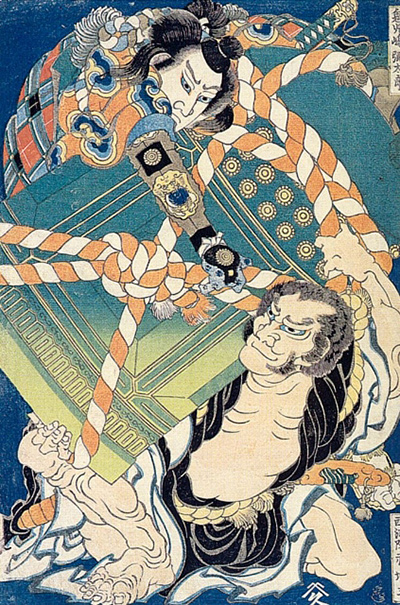Katsushika Hokusai is a legend of illustration, with each painting leaving a question and quest for more, a pursuit of understanding the meaning behind each canvas. Hokusai's Onikojima Yataro and Saiho-in Akabozu is a masterpiece, to say the least.
The painting is vibrant, the choice of color significant, the depiction alluring, each touch, every single detail magnificent, building up to one extraordinary masterpiece. The painting is from an untitled series of warriors in combat that depicts Onikojima Yataro and Saiho-in Akabozu wrestling with a giant bronze bell. Katsushika Hokusai (1760-1849), is still considered as one of the greatest artists in Japan today.
Hokusai's most famous work, is the woodblock series in the year 1820, in Ukiyo-e which means picture of the floating world, such as The Great Wave off Kanagawa is today recognized as a major icon of the modern world art. Hokusai’s most famous woodblock prints are those depicting modern Japanese landscape views. These great sets extremely sought by collectors are quite a valuable collection.
They have also inspired generations of artists both in Japan and worldwide. It indeed can be arguably put forth that Hokusai rose to become one of the first Japanese artists to be recognized worldwide. Taking a close look at a Ukiyo-e woodblock print, we get to see that each color is made on a different block of wood, with some of Hokusai’s prints, using more than twenty curved blocks to create an image. Other times two or three colors from different parts printed on a single block created beautiful patterns.
Space was managed economically, as wood was at a premium in those ages. Thus no space was wasted. Hokusai's prints show a rich tapestry of colors, hence referred by Japanese as Nishiki-e or brocade pictures. The frequent use of blues in many of Hokusai's works came to be as a result of the development of new printing ink called the Prussian blue, a vibrant and vivid hue, imported to Japan and made available to artisans at a reasonable cost, with the first time being in the 1820’s.




